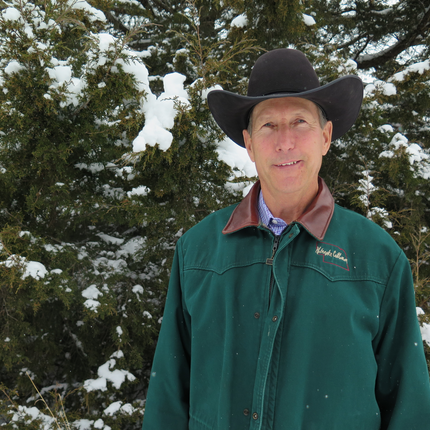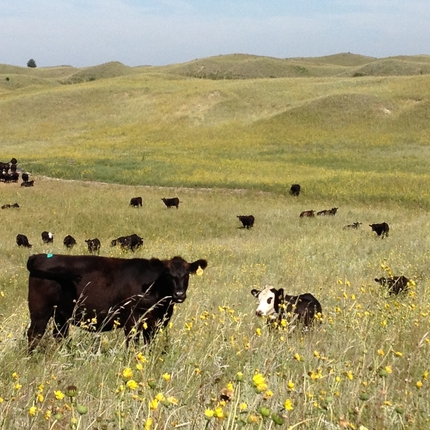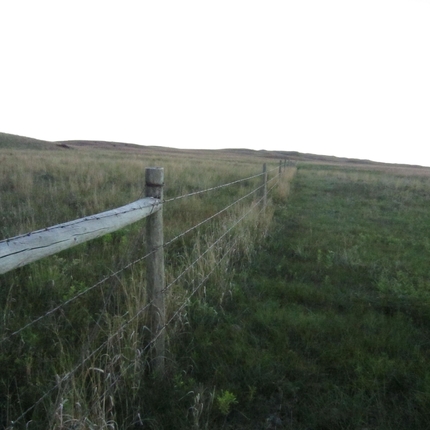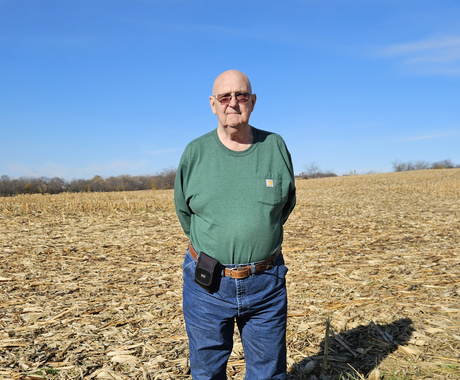“I think each generation of our family has learned new ideas and new methods to help improve the productivity and health of the land,” said Homer Buell, who owns and manages Shovel Dot Ranch along with his family.
Shovel Dot is home to the fourth and fifth generations of the Buell family. Larry and his wife, Nickie, as well as Homer and his wife, Darla make their homes on the ranch, although they have divided the ranch between them. Their children, the fifth generation of Buells have now taken over the day-to-day management of the operation.
Over the generations, the name Buell has become synonymous with high-quality cattle, innovation and conservation stewardship. The willingness to change and adapt with the times has kept the ranch thriving since Homer and Larry’s great-grandparents first settled in the area in 1882.
Benjamin Franklin Buell was a cigar-maker and school teacher on his way from Michigan to Washington State when the Sandhills hooked him. He returned to Rock County and filed claims for parcels of land, initiating the Buell family legacy.
One of the first changes Larry and Homer made was to divide the pastures into smaller parcels for better grass utilization with cross fencing. Then they worked on water development, adding more windmills and partnering with the U.S. Department of Agriculture’s Natural Resources Conservation Service (NRCS) beginning in the 1980s to build pipelines and add electric pumps. Today there are over 50 miles of pipeline watering close to 100 pastures, with an average pasture size of approximately 300 acres.
Also in the 1980s, the Buells began regularly recording and monitoring data from the ranch, specifically usage in animal unit months (AUM). The brothers each attended Alan Savory’s Holistic Ranch Management School, started working with a grazing consultant, and formed a ranch management club – all of which increased the family’s understanding of forage management and monitoring.
“All those things we’ve done have helped us use water more effectively and efficiently, but have also helped the health of the grass,” said Homer. Grass health is something the Buells take seriously and have gathered data on for decades.
In the 1990s, the Buells were early adopters of a computer-based information-gathering system. Larry and Homer wanted to better understand what effect they were having on the land with their grazing practices. With a program called Grazing Manager, they were able to better orchestrate grazing plans and monitor changes from year to year.
As participants in the Conservation Stewardship Program, the Buells engage in multiple wildlife-friendly practices, including prescribed grazing, using animal escapes and fencing off 50 acres around two lakes to provide habitat for deer, turkey, ducks, swan and geese. In addition, the Buells fenced off a mile of river habitat on their land and planted numerous windbreaks for cattle, turkey, and deer habitat.
“Profitability was part of the reason. But it makes you feel good too. If you look out there and you know you have a healthy landscape,” said Homer.
Conservation practices in the future will focus on removing cedar trees from the ranch’s pastures – one of the leading challenges for Sandhills landowners today. They have plans to stay on top of the trees with the help of the Sandhills Task Force and their cost-share program for prescribed burning.
Working with different programs and partners makes good sense to Homer Buell, who says he is constantly learning from the people around him. “I realize that no one person has all the answers and to have good people around you to make good decisions does not hurt my ego at all.”
Top image: Homer Buell and his family are known for their innovative approaches to conservation stewardship. Center photo: Prescribed grazing can be used to improve or maintain desired plant species, among other conservation objectives. Bottom photo: Cross fencing is a conservation practice that allows for the controlled movement of livestock in a rotational grazing system. | Photos by Kat Shiffler







